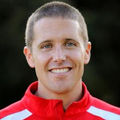The Active People, Healthy Nation initiative from the Centers for Disease Control and Prevention (CDC) has a mission of helping 27 million Americans become physically active and “creating an active America, together.”
There are three distinct elements involved in reaching that 27 million milestone: (1) inspiring inactive individuals to perform at least one 10-minute session of moderate-intensity physical activity each week, (2) motivating people who are already somewhat active to perform enough physical activity to meet the minimum aerobic physical activity guidelines and (3) empowering youth to be physically active for at least 60 minutes every day.
The third of those three elements addresses an age group that has seen consistent declines in physical activity participation in recent decades, for various reasons. In most of the U.S., youth have been negatively impacted by the decline in physical-activity requirements in schools. Around the globe, this is coupled with an increase in sedentary recreational activities like viewing social media and streaming video, computer gaming, and watching television.
Youth can achieve substantial health benefits by performing bouts of moderate- and vigorous-intensity physical activity that add up to 60 minutes or more each day. This should include cardiorespiratory activities as well as age-appropriate muscle- and bone-strengthening exercises. Bone-strengthening activities are especially critical for children and young adolescents, because the greatest gains in bone mass occur during the period just before and during puberty.
Behaviors established at a young age have a high probability of persisting into adulthood. Of course, this cuts both ways. While it’s true that physically inactive youth are likely to remain inactive into adulthood, the opposite is also true, as active youth are likely to remain active as they get older. This is why it’s so important for adults—including health coaches and exercise professionals, as well as parents and other caregivers—to model enjoyable and consistent physical activity.
Inspiring children to be more active requires understanding the child and their interests and motivations. While recreational and competitive sports are a great way to provide opportunities to be active, for some children, especially those whose motor skills are less developed or who have overweight or obesity, the competitive atmosphere can be defeating. You can have a positive impact on a child’s perception of exercise by ensuring that activities are fun for the child and appeal to their unique interests. For example, a child interested in science may enjoy a hike to collect flower or rock specimens, while a child with a high sense of adventure may enjoy bouldering or rock climbing. Activities like dancing, bouncing on a trampoline and riding a bike or skateboard are all fun ways to increase cardiorespiratory activity.
Encourage children to try new modalities and experiment as they look for activities they find pleasurable. It is important that children understand that exercise involves simply moving the body and that everyone can enjoy movement.
 by
by 














 by
by